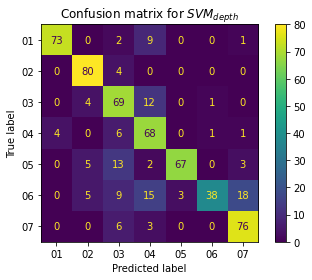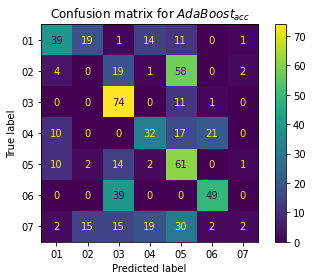Gym exercise classification
Introduction
We are interested in classifying various types of exercises performed by individuals to build an athletic app. This project specifically focuses on the classification aspect. The recorded seven different exercises performed by athletes using wearable sensors and a depth camera can be found in the dataset available at this link. To recognize the type of activity performed by the athletes, I utilize my knowledge of multimodal data fusion by combining data from the depth camera and multiple wearable sensors.
Final result
The following tasks have been conducted to derive the final results and classifications:
- Data munging (pre-processing)
- Feature extraction and unimodal fusion for classification
- Feature extraction and feature-level fusion for multimodal classification
- Decision-level fusion for multimodal classification
Classification using Support Vector Machine (SVM)
Classification based on the accelerometer sensor

This classifier performs better in identifying exercises 01, 04, and 05 compared to other exercises. However, exercises 03 and 06 are the most misclassified exercises.
Classification based on the depth camera sensor

Almost all exercises, except exercise 06, are correctly recognized when using the data from the depth camera sensor.
Classification using AdaBoost
Classification based on the accelerometer sensor

Exercises 03 and, to some degree, 05 are the two exercises that are most consistently recognized compared to others when using AdaBoost on accelerometer data.
Classification based on the depth camera sensor

Exercises 03, 04, and 05 are the exercises that are most accurately classified compared to others when using AdaBoost on depth camera data.
Conclusion
When using classification rules, we observe that SVM produces better results. This can also be intuitively observed by examining the confusion matrices.
